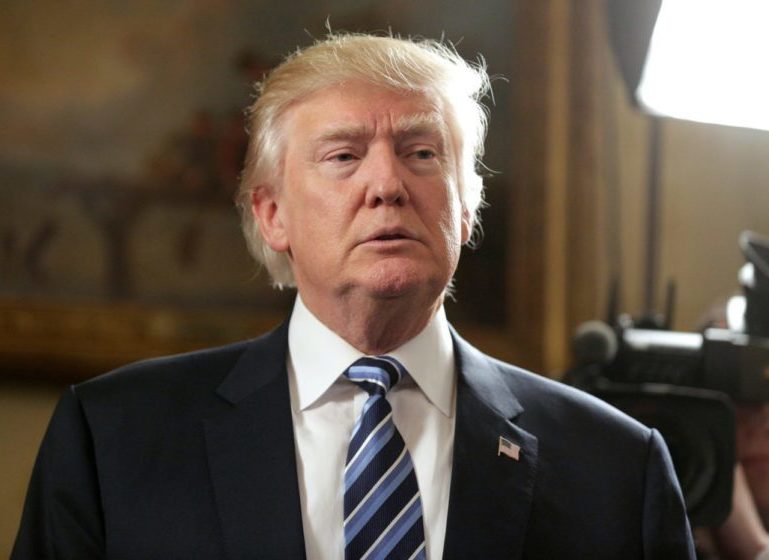If President Trump gets his wish for a “trade war,” Wisconsin’s economy stands to be among the early casualties.
Wisconsin must maintain a vigorous level of exports across a mix of sectors to prosper. It is a manufacturing state, an agricultural state, a raw materials state and a technology state – diversity that helps when trade relations are strong and makes Wisconsin vulnerable when tit-for-tat tariffs disrupt the global economy.
Those kinds of retaliatory measures are what the markets and most economists fear now that Trump has declared the United States will impose steep tariffs on steel and aluminum imports.
It’s right for Congress and the individual states to warn the president that trade wars are not “good, and easy to win,” but a path toward destroying jobs, harming consumers and protecting inefficient industries.
Wisconsin businesses exported $22.3 billion in goods and services to 202 countries in 2017, an amount that grew by 6.1 percent over 2017. The three biggest destinations were countries Trump has singled out in past trade criticisms – Canada, Mexico and China. The chief target of the steel and aluminum sanctions is China, but Canada will be caught in the crossfire, as well.
Exports to Canada grew by 4.3 percent last year to $6.9 billion, according to the Wisconsin Economic Development Corp., which analyzes federal data. The Canadian surge was driven by increases in the export of mineral products and electrical machinery. Exports to Mexico grew by 4.8 percent to a record $3.2 billion, mostly because of a jump in the export of electrical machinery and soybeans. Canada and Mexico are anchors of the North American Free Trade Agreement, which Trump has vowed to dismantle.
Exports to China jumped by 21.6 percent to $1.7 billion in 2017, also a record for exports to that country. Leading the growth in exports to China were increases in shipments of aircraft and parts; industrial machinery; dairy products; wood and wood products; and raw hides and skins.
It’s no surprise that farm products are a major part of the Wisconsin trade picture, accounting for $3.5 billion in sales to 147 countries, with Canada, Mexico and China ranking high on the list. Wisconsin is the nation’s 12th largest agricultural export state.
However, Wisconsin’s leading sector is industrial machinery at $5.4 billion, accounting for 24 percent of all state exports. Not far behind were electrical machinery and medical and scientific instruments, totaling $2.2 billion each and each representing 10 percent of the total exports.
Other major sectors are: Vehicles and vehicle parts ($1.9 billion); plastic products ($1.1 billion); aircraft and parts ($750 million); paper products ($881 million); and wood and wood products ($254 million).
In short, Wisconsin is a target-rich environment in a trade war.
The rise of a global middle class is a major force behind the export boom in Wisconsin and every state. The Asia-Pacific market, which includes China and India, will boast 66 percent of the global middle class by 2030. That compares to about 20 percent in Europe and North America.
Rather than view that demographic reality as a threat to American prosperity, companies and government programs in Wisconsin have been seizing the chance to bring high-quality products to markets than can finally afford to buy them.
One such program is ExporTech, a “short course” run by WEDC in partnership with the Wisconsin Manufacturing Extension Partnership and the UW-Stout Manufacturing Outreach Center. Other state programs help companies figure out what markets are right for them and gain other market intelligence. They include market access grants to qualified companies, links into U.S. Commerce Department programs, access to trade missions and consulates and advice on what’s often the trickiest part – getting paid without running afoul of regulations at home or abroad.
Nearly 6 million U.S. jobs are directly tied to exports. Another 6 million are indirectly tied to trade – for example, a truck driver who transports products to port for shipment overseas. Wisconsin accounts for up to 250,000 of that U.S. total.
A year ago, when the Washington Post reported on places in America that are most vulnerable to a trade war, Wisconsin showed up prominently on a “heat map,” as did many other Midwest states. Fond du Lac ranked as one of the 10 most trade-dependent metro areas in the country, with exports making up 25.1 percent of its gross domestic product.
Maybe it’s intended to fulfill a campaign promise or simply a negotiating tool, but Trump’s trade war talk is certain to blow up many state economies – Wisconsin’s included.
Tom Still is president of the Wisconsin Technology Council.


